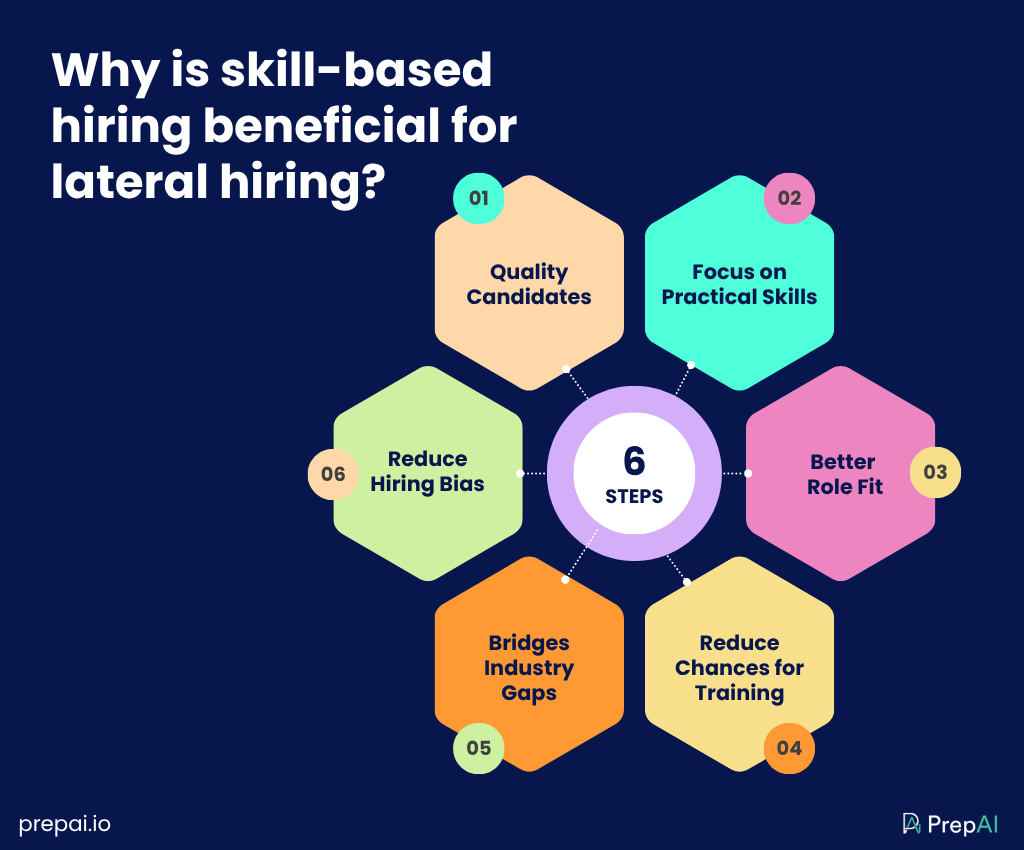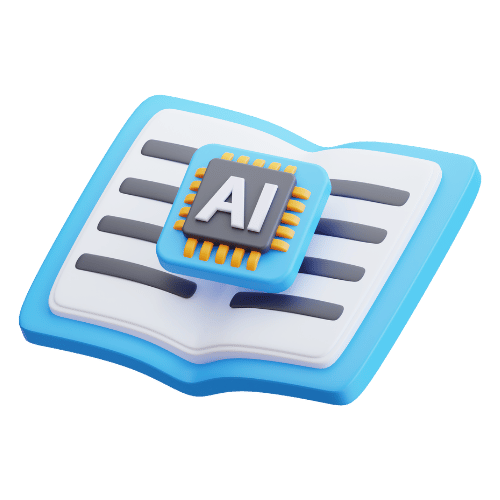Skill-based assessment refers to a method of evaluating candidates' proficiency, abilities, and knowledge in respect to specific job-related skills. It involves testing the skills instead of just relying solely on education or experience to determine candidates' potential. Let’s understand how skill assessment can navigate an easy path for lateral hiring.
Finding talent is an ongoing effort. The importance of strategically hiring qualified personnel cannot be overstated as businesses strive to innovate, grow, and adapt to changing customer demands. Lateral hiring, or the practice of identifying candidates for key positions from outside the organization, is one tactic that always gains a lot of attention. This strategic approach can effectively be enhanced using skill based assessment. For example, if you want to hire a marketing professional, instead of looking at a marketing or management degree, you would be more interested in learning about a candidate’s creative marketing concepts or, most likely, his communication skills in order to promote a particular product. To counter this, HR can extensively use AI tools like PrepAI to curate skill based assessment to evaluate competency. Additionally, HR professionals can automatically generate custom interview questions based on specific skills required for the role such as communication, creativity, or marketing strategy, helping them make faster data-backed decisions.
When using skill based selection, a skill checklist is used to promote the job opening. Only the candidates with the defined skills will probably apply for the job. You can eliminate hundreds of unmatched applications from the pool by doing this. Thus, the candidates who possess these skills will stand out from the rest of the candidates, and the hiring managers can effectively focus on the most qualified individuals and accelerate the hiring process.
Why is skill-based hiring beneficial for lateral hiring?
The global hiring scale is transforming, and talent acquisition teams are shifting to skill-based hiring. As per a survey, 73% of companies are using the 2023 hiring model, where 27% of them have adopted the method of skill-based assessment hiring. Finding the perfect candidate who can fit in and make a difference right away is the goal of lateral hiring. Thus, recruiters who hire candidates based on their skills will have a distinct edge. Now, the benefits it will have on lateral hiring as follows:

Quality Candidates
According to Topgrading, the estimated cost of mis-hires is around 5 to 27 times the basic compensation of mis-hired employees. Implementing skill-based hiring is one of the simple solutions to hire the best candidates. The sincere applicants are likely to apply when your organization posts a job opening with a clear list of the hard and soft abilities. The HR can create skill based assessments using AI tools that help recruiters evaluate their abilities directly rather than just solely relying on their resumes. This auto generated structure of AI tools helps in making relevant interview questions that align with the job required skills. Thus, the goal of skill based questions is to demonstrate competency, which shows how a candidate proficiently performs the relevant tasks.
Focus on Practical Skills
With a skill-based hiring method, the emphasis shifts from the resume to the candidate’s actual abilities. It is also useful for lateral hiring, where candidates frequently come from a variety of industries or business cultures. This process focuses on prioritizing practical and real-world skills. By choosing AI to generate questions that test real-world thinking and application, ensures that candidates are prepared for the on-job scenarios or not. This approach will further get a boost when it is integrated with cognitive learning assessment that helps in evaluating candidates’ ability to learn, process information, and apply reasoning in real-time. Organizations may more effectively find applicants who possess both the necessary experience and the mental agility to adjust, learn, and perform well in a new setting by integrating skill evaluations with cognitive learning tests. This will provide a more seamless transition and a faster impact in the role.
Better Role Fit
With a good idea of candidates’ skills, hiring managers can analyze effectively for which position the candidate will suit best. By evaluating functional and technical skills with talent assessment tools, the recruiters get a clear picture of what a candidate can do other than what he actually did in the past. Thus, it results in providing candidates with higher employee satisfaction and stronger performance. Moreover, including leadership assessments in the hiring process provides even more accuracy for positions at the mid- to senior-level. These tests evaluate a candidate’s communication style, emotional intelligence, decision-making style, and team-leading skills under pressure—all of which are essential for positions requiring more than just technical proficiency.
Reduce Chances for Training
When any candidate is hired on the basis of core skills that align with the job, it showcases that employees are almost trained. Therefore, the traditionally required efforts and resources to onboard a new employee are either completely eliminated or much reduced. For example, if a company is hiring a software engineer to make software for businesses and organizations, based on his skills, he would already be an expert in programming, data structures, algorithms, and operating systems and understand SDLC, allowing him to seamlessly integrate into the development process with minimal guidance. Using AI tools like Prep AI crafts domain-specific and skill-aligned assessments, allowing recruiters to be confident in candidates they’re hiring. Thus, onboarding such types of candidates can bring productivity and ensure long-term growth potential for the company.
Bridges Industry Gaps
Hiring managers will always get diverse industrial experiences when looking for lateral hiring, which presents both opportunities and challenges. Employers can highlight transferable competencies and get rid of the restrictions of domain-specific experience by using skill-based hiring. For this, HR can conduct necessary lateral job tests, or easily build multi-dimensional interview templates using AI which include cognitive assessments, leadership assessments, and functional assessments, validating the potential of the candidate to succeed in a new environment. This strategic approach widens the talent pool, enhances team performance, and promotes diversity and innovation within the organization.
Reduce Hiring Bias
When hiring managers think of shifting their focus from subjective to skill-based assessments, it leads to neutralizing the unconscious biases that often occur in traditional recruitment. Using this method, the HR can evaluate candidates based on their competence assessments, technical assessments, cognitive assessments, and more, which entirely shifts the focus on abilities rather than the background. Using consistent hiring methods ensures that all candidates are assessed on the same criteria. By Providing professionals from various industries, educational backgrounds, or career trajectories with equal opportunities, improves test integrity and fosters diversity. Such neutrality is crucial for lateral hiring, where candidates have a wide variety of experiences, guaranteeing equitable hiring practices and creating diverse, high-performing teams.

Conclusion
When HR utilizes the varied skill sets and experiences of external workers, organizations can increase their competitiveness, employees can adjust to altering market conditions, and they can speed their growth process using AI. By investing in effective onboarding, fostering a positive workplace culture, and aligning external recruiting with strategic goals, businesses may take advantage of lateral hiring and spur growth and preserve a competitive edge in the dynamic market.
Skill-based assessment helps in broadening the pools of qualified candidates and guarantees that you select candidates based on their current abilities and have a potential for future development. Assessing applicants based on their talents is essential to be prepared for the future, whether you’re establishing leadership pipelines or filling a critical position. Thus, relying on AI and generating role-aligned interview questions in seconds saves time, improves quality, and enables smarter lateral hiring decisions.



